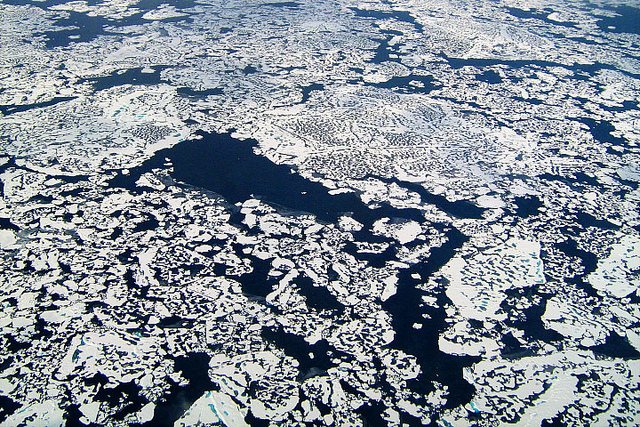
Human civilization as we know it began to form a mere 6,000 years ago. However, during this short period of time, the human race has cultivated land, built cities, transportation and made extraordinary technological advancements – but at what cost?
To build our cities, power our homes and feed our ever growing population we have stripped the world of its resources, tipping the balance of delicate ecosystems. Fossil fuels have been burnt, releasing toxic emissions into the atmosphere, and rainforests have been decimated to provide us with wood and precious land to cultivate. The effects of these actions, are beginning to reveal themselves in the form of climate change.

Evidence of the current effects of climate change is now readily available at your fingertips, with the help of Google Timelapse. Originally launched back in 2013, Google Timelapse has recently received an update using the same methods used to sharpen images and remove clouds in Google Maps and Earth earlier this year.
Google Timelaspe now feature global images of the last 4 year, giving users a clearer picture about the current state of the planet. To create these images, Google sifted through about three quadrillion pixels from more than 5,000,000 satellite images. Once the team had selected the best pixels, they then stitched them together to create 33 images of the entire planet, one for each year.
Since the project has been updated, many people have used the program to observe the development of prestigious cities, including Las Vegas and Dubai. However, most importantly, Timelapse can be used to observe how human activity is rapidly destroying some of the world’s most iconic environments and landscapes.
Desertification
Data shows that the average global land and ocean temperatures in 2016 are set to be the warmest on record. With this rapid rise in temperatures, the world’s most hostile environments have experience prolonged periods without water.
As the world’s deserts become increasingly exposed to rising temperatures, desertification begins to spread across the landscapes surrounding the desert. As a result, the deserts eventually increase in size. In the time-lapse featured above, you can clearly see the once lush vegetation surrounding this African desert transform into a wasteland.
“Desertification and land degradation cause poverty and hunger. In turn, these can lead to massive environmental damage and natural resource scarcity that sometimes ends with conflict. It certainly hinders sustainable development,” Louise Baker, Coordinator External Relations, Policy and Advocacy Unit, UNCCD, told IPS in an interview.
Melting Sea Ice
Deserts are not the only environment to be dramatically affected by global warming. Arctic and Antarctic sea ice is being measured at record breaking lows. Unable to withstand the rising global temperatures, polar ice is beginning to melt at an unprecedented rate, alarming researchers.
While there are many who still question whether climate change is man-made, the time-lapse featured above clearly depicts sea ice rapidly disappearing into the ocean. In fact, this year scientists discovered polar sea ice was 1.48 million square miles – roughly the size of India – below the 1981-2010 average.
Rising Sea Levels
As the earth’s surplus of sea ice begins to melt, sea levels begin to rise. While those of us in large cities are yet to be affected by the rising sea level, those who live in low-lying islands have not been so fortunate.
Earlier this year, an Australian study found five tiny islands had been completely swallowed by the sea due to rising sea levels and erosion. The submerged islands were part of the Solomon Islands, which has suffered greatly due to shoreline recession.
Although the five submerged islands were not inhabited by humans, an additional six islands are rapidly losing landmass to the waves. Villages have been destroyed by the impending waves, forcing villagers to flee their homes and relocate to higher ground.
“The sea has started to come inland, it forced us to move up to the hilltop and rebuild our village there away from the sea,” Sirilo Sutaroti, an islander of Nararo told researchers.
Deforestation
In this final time-lapse, we see the direct effects of deforestation. The time-lapse above shows an area of the Amazon rainforest. The pale discolouration that spreads rapidly across the green backdrop of the rainforest, much like a virus, are the areas that have been decimated by industries.
Despite what we are told about deforestation, we often picture the world’s rainforests as an infinite kingdom of trees and vegetation. However, the evidence presented in this simple time-lapse supports analyses that estimate that more than 20 percent of the rainforest has been destroyed by humans.
Image: Flickr, Kevin Gill (CC BY-SA 2.0)
You want to support Anonymous Independent & Investigative News? Please, follow us on Twitter: Follow @AnonymousNewsHQ
This Article (Google Timelapse Update Shows The Severity of Man-Made Climate Change) is a free and open source. You have permission to republish this article under a Creative Commons license with attribution to the author and AnonHQ.com.




